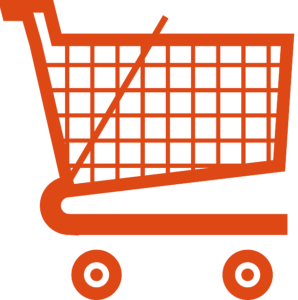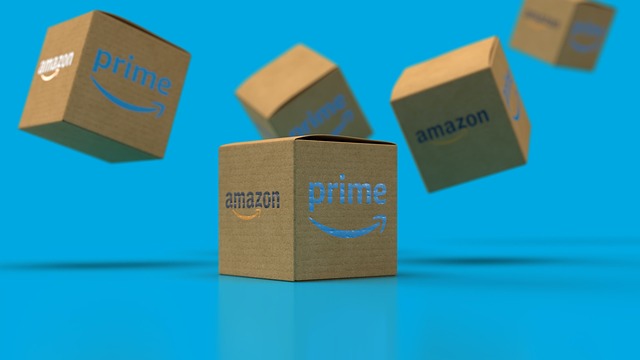Selling on Amazon is a great way to reach millions of potential customers and build your business. Whether you’re selling handmade crafts, vintage items, or brand new products, Amazon provides an excellent platform to start your online selling journey. If you’ve been wondering how to sell on Amazon and want to get started, this guide will walk you through the process in a simple and clear way.
Why Sell on Amazon?

Before we dive into the “how,” let’s talk about why Amazon is a great place to sell:
- Massive Reach: Amazon is one of the largest e-commerce platforms in the world, with millions of shoppers visiting every day.
- Built-in Traffic: With Amazon’s massive customer base, you don’t need to worry about driving traffic to your listings. People are already searching for products.
- Trust Factor: Customers trust Amazon. When they see your product on Amazon, they are more likely to make a purchase.
- Easy Setup: Setting up your store is simple, and Amazon provides plenty of resources to help you.
Now that you know why selling on Amazon is a smart move, let’s walk through the steps to get started.
Step-by-Step Guide to Selling on Amazon

Step 1: Create an Amazon Seller Account
To start selling on Amazon, the first thing you need to do is create a seller account. Here’s how:
- Visit Amazon Seller Central: Go to Amazon Seller Central.
- Choose Your Selling Plan: Amazon offers two types of selling plans:
- Individual Plan: Best for sellers who plan to sell fewer than 40 items a month. There’s no monthly fee, but Amazon charges a small fee per sale.
- Professional Plan: Best for sellers who plan to sell more than 40 items a month.
- Sign Up: Provide basic information about your business, including your name, email address, and bank account details.
- Verify Your Identity: Amazon will ask for a few documents, like a government-issued ID and a business verification document (if applicable).
Once your account is set up, you’re ready to start listing products!
Step 2: Choose What to Sell
Amazon allows you to sell a wide variety of products, including:
- Retail products: New, branded items from wholesalers or manufacturers.
- Private Label Products: Products that you can rebrand and sell under your own name.
- Handmade Goods: If you’re a craftsperson, Amazon Handmade allows you to sell your creations.
- Books: Amazon originally started as a bookstore, so selling new or used books is still a popular choice.
It’s essential to choose a product that not only interests you but also has demand on Amazon. You can use Amazon’s research tools or external tools like Jungle Scout or Helium 10 to understand market trends and competition.
Step 3: List Your Products
To list your products, follow these steps:
- Add a Product: From your Seller Central dashboard, click on “Inventory” and select “Add a Product.”
- Product Details: Provide product details such as:
- Product title
- Product description
- Bullet points (short, key selling points)
- Product images (high-quality images are important!)
- Price
- Quantity (how many units you have available)
- SKU (Stock Keeping Unit, if applicable)
- Product category (ensure your product is listed under the correct category)
- Keywords (this helps your product show up in searches)
- Set Your Price: Make sure you set a competitive price based on your research. Don’t forget to factor in Amazon fees (which can vary depending on the product category) when pricing your items.
Step 4: Fulfill Your Orders
Amazon offers two main ways to fulfill orders:
- Fulfillment by Merchant (FBM): You handle storage, packaging, and shipping of products directly to customers. This gives you more control but also more responsibility.
- Fulfillment by Amazon (FBA): Amazon handles storage, packaging, and shipping of your products for you. You send your products to Amazon’s warehouses, and they take care of everything else. FBA also gives you the option to sell as an Amazon Prime product, which can boost sales significantly.
Step 5: Optimize Your Listings for Search (SEO)
Just like Google, Amazon has a search engine (A9) that helps customers find products. To ensure your products are visible, you need to optimize your listings:
- Product Title: Use clear and concise titles that include keywords customers are likely to search for.
- Bullet Points: Focus on the key features and benefits of your product, using relevant keywords.
- Product Description: Write a detailed description that explains what the product is, how it works, and why it’s valuable.
- Backend Keywords: These are hidden keywords that Amazon uses to index your product. Use all available space and include synonyms, variations, and related terms.
- Product Images: High-quality images that show your product from different angles and in use are essential. Amazon allows up to 9 images per listing.
Step 6: Manage Customer Service and Feedback
Customer service is crucial for maintaining a good seller rating. Here’s what you need to do:
- Respond Quickly: If a customer sends you a message, respond as quickly as possible. Amazon tracks your response time, and quick replies can help you maintain a good seller rating.
- Handle Returns and Refunds: Have a clear returns policy. If you’re using FBA, Amazon handles returns for you. If you’re using FBM, you’ll need to handle them yourself.
- Request Reviews: Positive reviews are essential for building credibility. After a customer receives your product, you can request a review via Amazon’s system.
Step 7: Promote Your Products
Once your listings are live, it’s time to attract buyers. Here are some ways to promote your products:
- Amazon Advertising: Use Amazon’s advertising options to promote your products. You can create ads that appear on search result pages, product pages, or even external websites.
- Deals and Discounts: Offering discounts or creating special deals can help attract customers.
- Social Media: Promote your Amazon store on social media platforms like Facebook, Instagram, and Twitter. This can drive more traffic to your listings.
Important Tips for Success on Amazon
- Monitor Your Metrics: Keep an eye on your performance metrics (e.g., customer feedback, order defect rate, late shipment rate) in Seller Central. A high seller rating leads to better visibility and more sales.
- Analyze Competitors: Regularly check your competitors’ listings, prices, and reviews. Understanding what works for them can help you improve your own listings.
- Stay Compliant: Make sure you follow Amazon’s rules and regulations to avoid penalties. This includes adhering to their product guidelines, intellectual property policies, and tax obligations.
Conclusion
Selling on Amazon is an exciting and potentially profitable way to start your online business. With millions of customers and a range of tools to help you succeed, it’s a great platform for both beginners and experienced sellers. By following the steps above and optimizing your listings, you can start making sales in no time!
If you’re ready to begin your journey, head over to Amazon Seller Central, create your account, and start listing your products. With time, dedication, and smart strategies, your Amazon store can become a successful business.
Remember: It’s a journey, so be patient and keep learning. Keep visiting Smart Vichar for more useful tips and guides on growing your online business!
